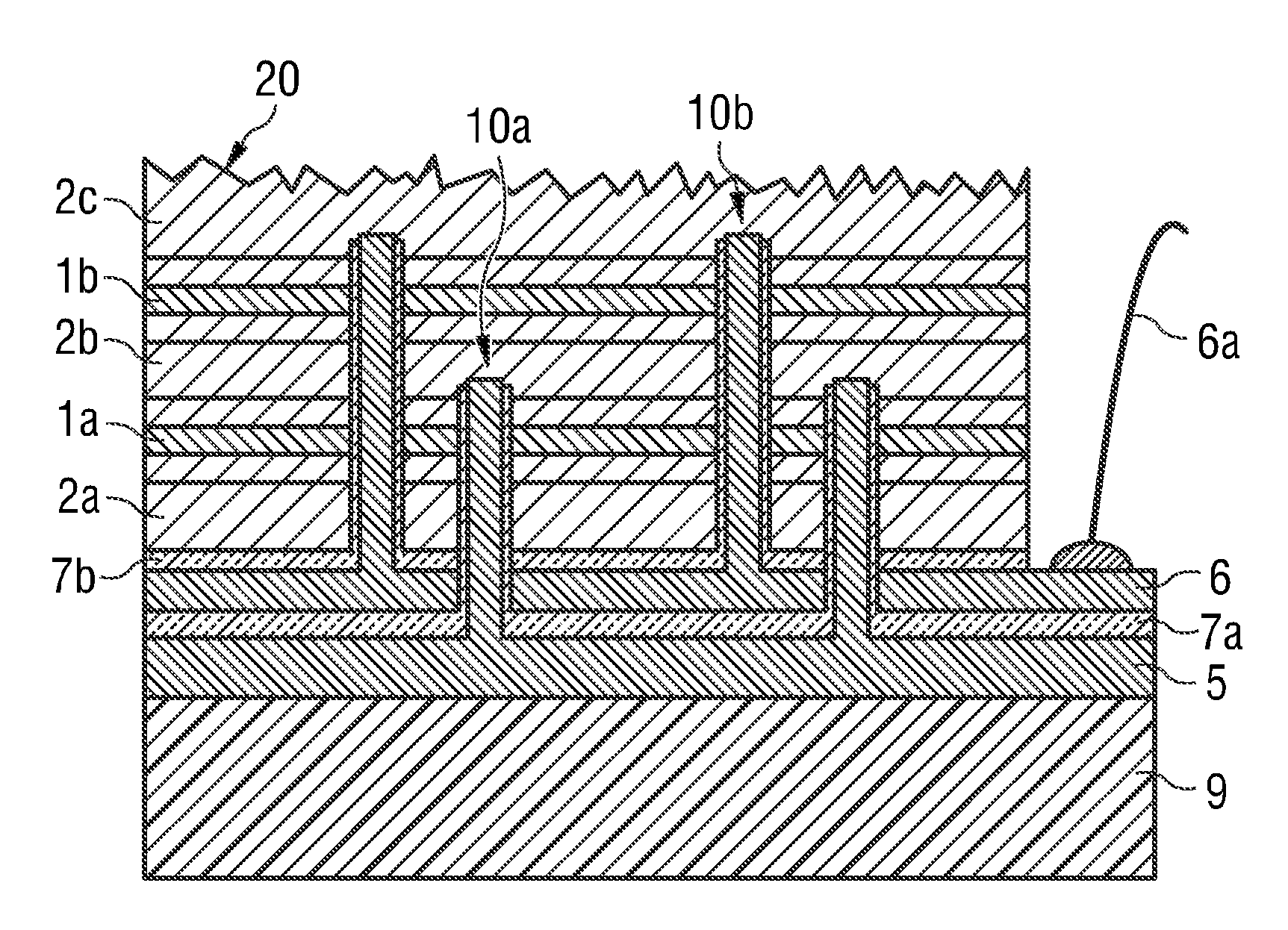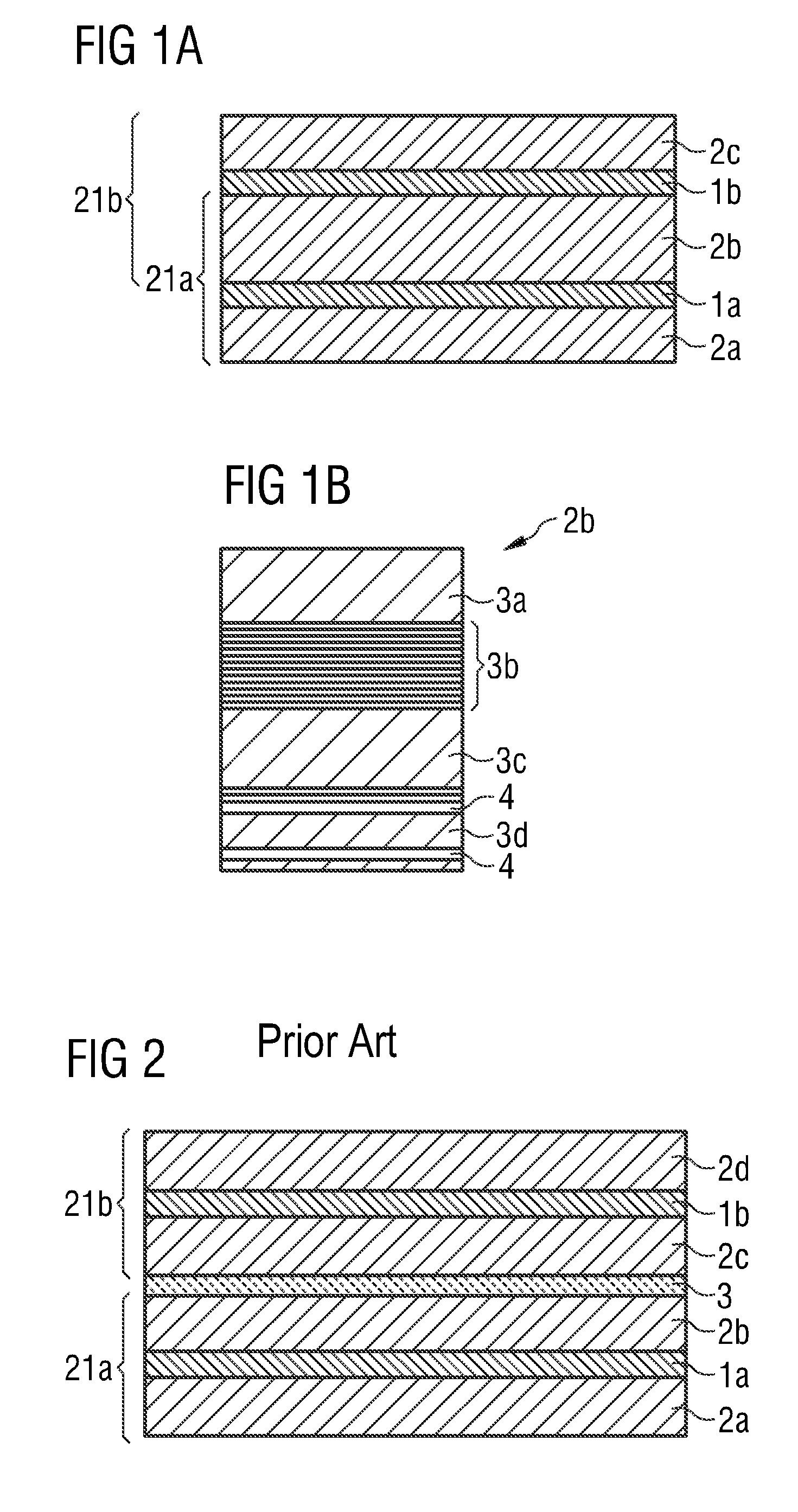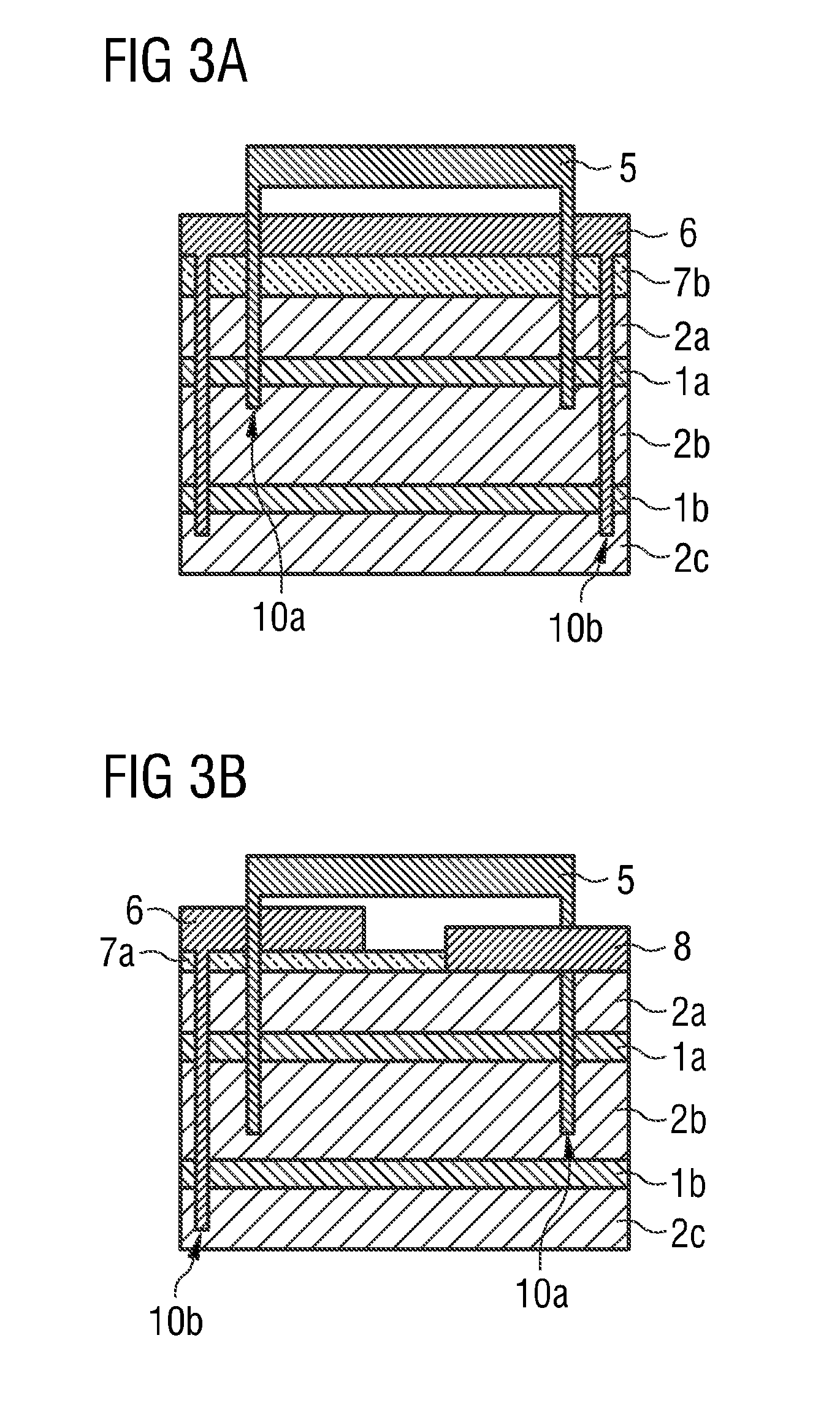Optoelectronic semiconductor chip and method for producing the latter
a technology of optoelectronic semiconductor chips and semiconductor chips, applied in the direction of semiconductor devices, basic electric elements, electrical apparatus, etc., can solve the problems of reducing the efficiency of radiation-emitting semiconductor chips, limiting the brightness per given area and thus radiance, and drastic reduction of effective charge carrier density, so as to avoid ohmic losses in semiconductor chips and high radiance
- Summary
- Abstract
- Description
- Claims
- Application Information
AI Technical Summary
Benefits of technology
Problems solved by technology
Method used
Image
Examples
Embodiment Construction
[0043]In the figures, identical or identically acting components may in each case be provided with the same reference numerals. The components illustrated and their size ratios to one another should not be viewed as being to scale. Rather, individual elements such as for example layers, structures, components and regions can be shown exaggeratedly thick or large for greater ease of depiction and / or better comprehension.
[0044]FIG. 2 shows a cross-section of a semiconductor chip with a layer stack according to the prior art. The semiconductor chip comprises a first semiconductor layer sequence 21a and a second semiconductor layer sequence 21b. The first semiconductor layer sequence 21a comprises a first semiconductor region 2a of a first conductivity type, a second semiconductor region 2b of a second conductivity type and a first active zone 1a arranged between the first semiconductor region 2a and the second semiconductor region 2b for generating a first electromagnetic radiation. Th...
PUM
 Login to View More
Login to View More Abstract
Description
Claims
Application Information
 Login to View More
Login to View More - R&D
- Intellectual Property
- Life Sciences
- Materials
- Tech Scout
- Unparalleled Data Quality
- Higher Quality Content
- 60% Fewer Hallucinations
Browse by: Latest US Patents, China's latest patents, Technical Efficacy Thesaurus, Application Domain, Technology Topic, Popular Technical Reports.
© 2025 PatSnap. All rights reserved.Legal|Privacy policy|Modern Slavery Act Transparency Statement|Sitemap|About US| Contact US: help@patsnap.com



